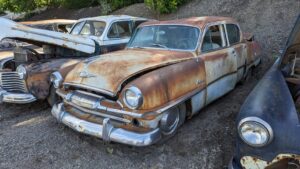Why Is the Chrysler Airflow Taking So Long?

Image: Stellantis
Another January means another Consumer Electronics Show. They’re basically like the car shows of old, except for tech, and therefore mostly showcases of vaporware. Stellantis has had big showings at CES in the past and will again in 2023, pushing two big concepts — the Ram Revolution and Peugeot Inception. Both are electric vehicles, and they may not be the only debuts the company shares depending on what Chrysler has in store.
A Stellantis release from last week provided a rundown of everything to expect from the automaker at the conference. For Chrysler, that means an introduction to “the latest developments in [the company’s] commitment to launch the first Chrysler battery electric vehicle in 2025 and offer a full battery electric portfolio in 2028.” We’ve seen the Airflow concept multiple times by now, so it wouldn’t be earth-shattering if we’re shown yet another iteration. Hopefully, we’re treated to something better.
What’s worrying about the Airflow is how long it’s taking. There’s concern that the brand might not survive long enough to sell the car. That’s valid, but Chrysler has subsisted for ages already with almost no product, what’s another two years in the grand scheme?
Image: Stellantis
The Airflow’s real problem is that it’s arriving far too late with no proper excuse. Dodge could take its sweet time with the Charger Daytona because people love its internal combustion-powered muscle cars and aren’t ready to part with them. Jeep could bide its time, too, because electric trucks and SUVs with an off-road bent aren’t really a thing yet. Ram probably should have been quicker with the Revolution, but what do you expect from the company that seems thoroughly underwhelmed and underprepared for the EV age? Regardless, there’s a national thirst for pickups; they’ll be fine.
Chrysler, though, really should have been put out to pasture five or six years ago, unless Stellantis could pitch something the public might find compelling, preferably with a snazzy rebrand. The Airflow simply ain’t it, which is a problem because it looks pretty much finished. Unless something changes massively between now and 2025, there’s nothing about it so interesting or beautiful to be unfit for production — concerning for a car with two more years of marketing in front of it. The Ioniq 5 looks a decade newer; by the time Chrysler’s first EV is on the road, it’ll be three years old. Who will be waiting for the Airflow?






